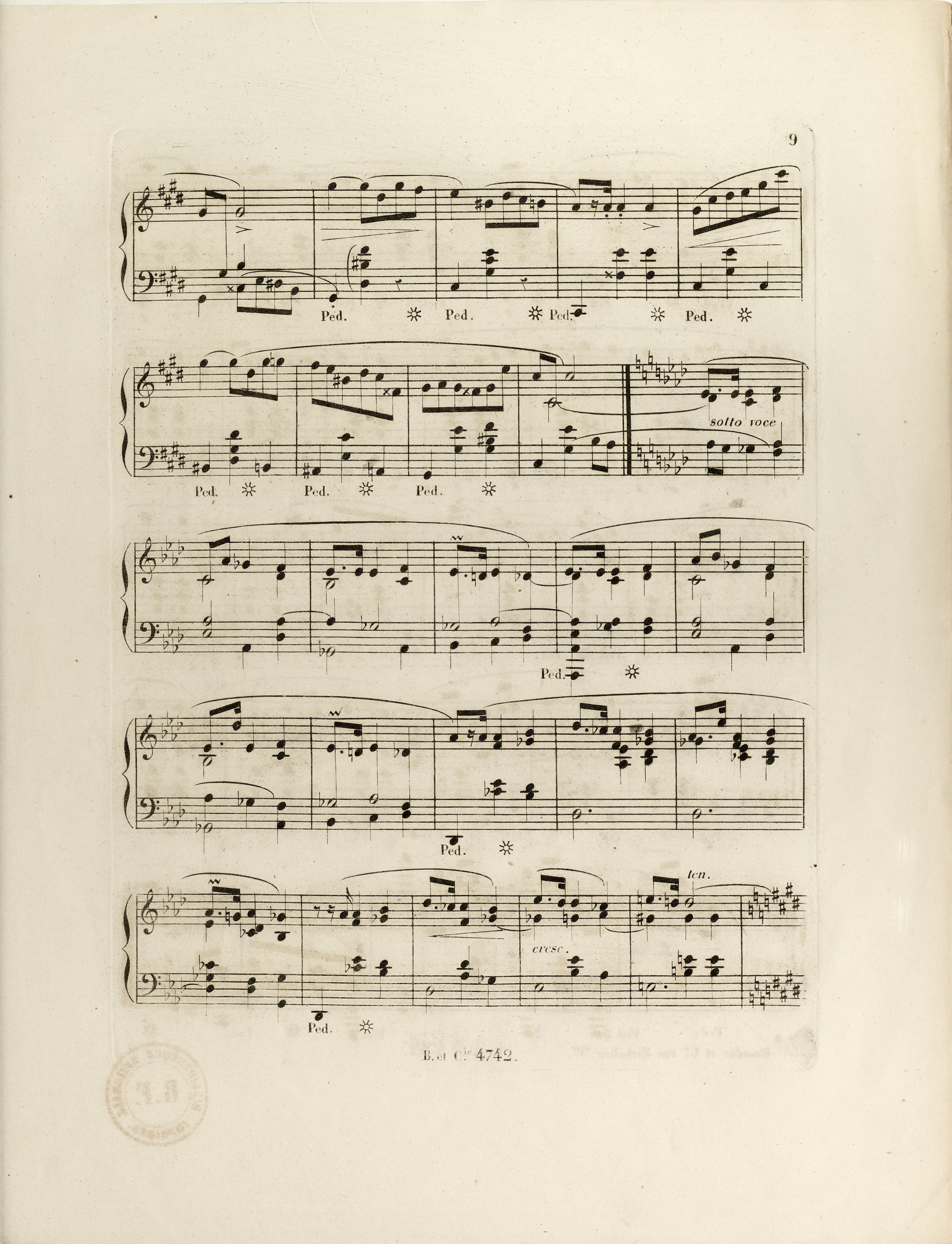




|
a |
|

|
a |
|
|
|
a |
|

|
a |
It is difficult to interpret the FE slur over the L.H. part, since both its beginning and end were printed inaccurately – the slur could be starting from a at the end of bar 38 or at the beginning of bar 39, and it could be ending on g
at the end of bar 38 or at the beginning of bar 39, and it could be ending on g or f. Bearing in mind that slurs in Chopinesque autographs can often be inaccurate, one could imagine 4 possible versions of this slur (concerning its range), out of which two appear in the editions based on FE (GE and EEW):
or f. Bearing in mind that slurs in Chopinesque autographs can often be inaccurate, one could imagine 4 possible versions of this slur (concerning its range), out of which two appear in the editions based on FE (GE and EEW):
- The four-note slur of EEW. Two-part notation is an argument for including the 3rd beat of bar 38 in the separated tenor motif, since the notation in analogous bar 34 is different; an argument against including this beat in the tenor motif is the beginning of the slur going slightly before the 1st note in bar 39; another argument against this decision is the absence of a slur in bar 38 (at the end of the previous line). Similar motifs clearly marked with slurs can be found in, e.g. the Polonaise-Fantaisie, Op. 61, bars 105-107.
- The three-note slur in bars 38-39 (our second alternative suggestion). Chopin used such motifs in a very characteristic manner, e.g. in the Polonaise in C minor, Op. 40 No. 2, from bar 35. The above arguments for and against including a
 in bar 38 under the slur remain in force. The ending of the slur in bar 39 being close to the 3rd beat of this bar is also an argument rather against this version.
in bar 38 under the slur remain in force. The ending of the slur in bar 39 being close to the 3rd beat of this bar is also an argument rather against this version. - The three-note slur in bar 39 (version of GE). According to us, it is the most likely interpretation of the FE slur, which looks as if it were engraved slightly (ca. 3 mm) to the left of the right place. This is the version we provide in the main text.
- The two-note a
 -g
-g slur in bar 39. Musically speaking, encompassing this written-out appoggiatura with a slur seems reasonable. Graphically speaking, such a slur could be considered a literal interpretation of the notation of FE.
slur in bar 39. Musically speaking, encompassing this written-out appoggiatura with a slur seems reasonable. Graphically speaking, such a slur could be considered a literal interpretation of the notation of FE.
In both versions with a slur reaching f we separate this crotchet from the A -f sixth. It is aimed at keeping the same direction of stems in the motif encompassed with a slur (in the sources the stems of all 3 top voice crotchets in bar 39 point downwards, whereas the last one is combined with A
-f sixth. It is aimed at keeping the same direction of stems in the motif encompassed with a slur (in the sources the stems of all 3 top voice crotchets in bar 39 point downwards, whereas the last one is combined with A in the bottom voice. However, this combination could have resulted from a misinterpretation of the notation of [A] – in Chopinesque notation, stems combining particular notes belonging to dyads or chords often did not form one line, hence A
in the bottom voice. However, this combination could have resulted from a misinterpretation of the notation of [A] – in Chopinesque notation, stems combining particular notes belonging to dyads or chords often did not form one line, hence A and f written in a vertical line and with stems pointing downwards could have been easily regarded as a sixth written down in one-part notation.
and f written in a vertical line and with stems pointing downwards could have been easily regarded as a sixth written down in one-part notation.
Compare the passage in the sources »
category imprint: Differences between sources
issues: EE revisions, Inaccuracies in FE
notation: Slurs

